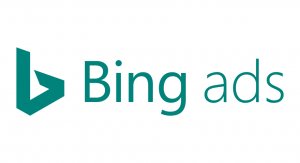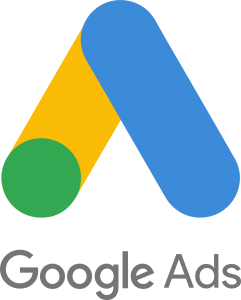So you’ve invested a lot of time and money into creating the perfect ad for your product or service. Now to decide on the most efficient place to display it. Bing vs. Google?
Should you go for the more popular choice, Google Ads? Or do you take an alternative route and opt for Bing Ads to showcase your campaign to the public? It’s all up to you and it could be both. Let’s have a closer look at each:
- Google, is the mighty search engine network used by millions of people worldwide daily. There are over 70,000 Google searches every second, making them the network market leaders in the digital world. Launched in 1997, Google continues to dominate the web today by providing the public with an answer to almost anything.
- Bing, coming in a close second Bing reaches 12 billion searches worldwide on a monthly basis. The company launched in 2009 and is owned by Microsoft with power over both Yahoo and AOL search engines. By choosing this network, you can promote your campaign over all three platforms. Bing is also used by third-party search engines such as Ecosia and Brave.
The following blog allows you to explore the similarities and differences between Google Ads vs Bing Ads to gain insight into their many features and shine a light on which network could benefit your ad campaigns the most.
Bing Ads Features

Bing is becoming more popular than before and now covers 33% of the US market share. But how well is it doing in comparison to the dominant Google? Let’s explore the many reasons why you should use Bing ads by analysing features and benefits:
- Display: Bing, Yahoo, and AOL all support text and display-based ads. When someone uses the Bing search engine, advertisements appear in the first few rankings without a highlighted ‘ad’ symbol. Viewers may not recognize that this link is an ad and therefore click on it, unconsciously increasing CTR.
- Reporting: Bing offers advanced analytics tracking software which allows you to stay on top of your campaign performance. Create a negative keyword list, experiment with keywords, and discover the most effective time to post your ad.
- Microsoft Advertising App: Manage your campaigns on the go with Microsoft’s mobile-friendly software. Simply download the app to reach your target audience through any device.
- Import Campaigns: Already trialled a campaign on another platform which wasn’t a success? You can simply transfer this into your Bing ad with their easy-to-use importing tools.
Who are the potential users reached with Bing?
Considering Google vs Bing vs Yahoo, which network allows you to reach your target audience? Well as Bing owns Yahoo, your campaign will appear on Bing, Yahoo, and AOL searches. Target millions of users by choosing a particular country or city for a specific group.
Who actually uses Bing?
The demographics for Bing tend to be individuals between 35-64 years old, the majority of them parents. If this meets your target audience description, Bing ads may provide a suitable option for you.
How does Bing Advertising work?
To create an ad on Bing, simply sign up for free and don’t pay anything until someone clicks on your advertisement. You will bid on specific keywords to ensure you reach your target audience and create a negative keyword list to avoid irrelevant searches. After this, you can sit back and watch your business grow.
Google Ads Features

Let’s face it, Google is the world’s most used search engine with an answer to almost anything. This powerful platform enjoys 88% of the US market share. Let’s dive deep into all the features Google Ads has to offer:
- SEO-Focused: A well-optimized Google ad ensures your campaign is ranked on the top of searches as you can focus on one keyword at a time which enhances visibility.
- A high volume of traffic: Google receives a tremendous amount of searches on a daily basis. A huge amount of brand awareness and traffic can be driven from this world-wide network.
- International Advertising: Google offers a Market Finder feature which allows you to test different groups all over the world and see who responds well to your campaign. You can explore the best place, time, and audience suited to your business.
- Type of Ads: Google supports both text and display ads offering more diversity by showcasing campaigns on YouTube, Google Maps, and Shopping, all popular partner sites. With over 5 billion videos watched on YouTube daily, there is no bigger video ad platform.
- Google Analytics: Save time when it comes to analysing your campaign performance. This feature alone is worth choosing Google for your campaign. Advanced reporting tools make it easier to optimize and target the right niche.
Who are the potential users reached with Google ads?
Between YouTube, Google Maps, Shopping, and Gmail, the reach is endless when it comes to Google Ads. Google tends to attract a broader global demographic for searches, due to its popularity and sense of familiarity for users.
How does Google Advertising work?
Google ads vs Adwords, what’s the difference? You may already know the term AdWords, which is actually just the previous name for Google ads. The sign up for Google ads is totally free, and you can set your own daily budget. Bid on the most relevant keywords for your campaign and create a negative keyword list to avoid unintentional clicks. Stay on top of your performance with Google Analytics, and adjust this list as needed.
The Pros and The Cons
Now that we have covered Bing ads vs Google ads, let’s evaluate the positives and drawbacks of each:
Google Ads
Google Pros | Google Cons |
| Google dominates the search engine market worldwide with a staggering 88% market share | High competition with high-value keywords results in an increase of PPC |
| Advertising diversity with YouTube, Gmail, Maps, and Shopping so you can reach a larger network | Users must bid for specific keywords as broad words can attract unintentional clicks due to the large network of visitors |
| Google Analytics allows you to stay on top of your performance | Won’t reach the 66 million users that choose Bing as their search engine |
| Wide variety of demographics |
Bing Ads
Bing Pros | Bing Cons |
| Campaign import tools allow you to easily convert previous campaigns into a Bing ad saving you time and effort | You may not reach a huge portion of the market against the trillions of people using Google |
| Less competition which results in fewer keyword bids and a lower PPC | Smaller market share than Google with only 33% |
| Excellent reporting features for managing your campaign | Older demographics between the ages of 35 and 64 may not suit your campaign |
| Over 6 billion unique searches every month | Not as likely to reach an international audience |
And the Winner Is…
At the end of the day, if your budget allows you to choose only one platform, go with the market leaders. Google has a wider variety of keywords to offer and the most visitors. You can also analyze your target audience and network demographics to ensure your ad displays to those that have a genuine interest in what you have to offer.
Keep in mind that Google also displays their ads on third-party sites known as the Google Display Network (GDN) whereas Bing doesn’t. Even when users aren’t directly browsing through the Google search engine, your Google ad will still appear on their partner sites. Weigh up the pros and cons of each to see which applies best for your campaign. It’s all down to your goals and budget so consider both options if you can.
Protecting your ads
Whichever platform you use, make sure to protect your campaigns from fake traffic. Invalid clicks on paid ads have been found to cost advertisers between 14-25% of their budget. Whatever your ad budget, industry or campaigns, you are likely seeing some sort of fraudulent click activity on your ads.
Run a free diagnostic with ClickCease, with our 7 day trial, to find out for yourself.
